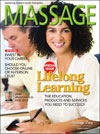Oneness and differences
Is there room for all of us, and all of our differences, in the oneness space?
Is there only one entrance to the oneness space?
What is the oneness space, anyway, and what does it have to do with the practice of Reiki?
Is it the same thing as nonduality?
And why is everybody talking about nonduality anyway?
Is it even possible to convey the concept with mere words? And when we try, aren't we simply re-enacting the old tale about the blind monks describing the elephant?

(Ukiyo-e print by Hanabusa Itchō, 1888, from Wikimedia Commons
You may well know the story already, but just in case, here's a brief summary. A group of blind men touch different parts of an elephant, and with that information, each tries to describe the whole elephant. But the one touching the trunk has a different description than the one touching the ear, the tusk, the leg, or the tail. Each description is perfectly accurate, so none of them is wrong -- except in assuming they can describe the whole elephant with such limited information.
Over the past few weeks, we've had a lively discussion here on the subject of oneness and more, all sparked by Heather Alexander's article on her New Year's resolution, Personal Responsibility and Being Reiki. From there we went on to a winding thread of topics. As the host of this conversation, I have the privilege and responsibility of trying to sum it all up, answer a few points, and put forth some conclusions. I begin by admitting that, like anyone else, all I can offer is my own little piece of the elephant.
Heather started things off by saying (if I may paraphrase) that since Reiki is not something outside us, in this era of bailout after bailout, she wants to focus on simply being Reiki, looking within, and drawing on her own inner resources. I'm sure Heather realized, as I do, that many Reiki practitioners were taught that we channel Reiki from somewhere else through ourselves to our clients. So to them, the idea that the Reiki energy is within us as well as outside us might seem a bit strange. That reminds me of a somewhat heated discussion I had last spring with a Reiki master who insisted that teachers who claim that universal energy is, well, universal, are thereby also claiming that anybody can practice Reiki, with or without attunements.
Reiki author Pamela Miles was the first to reply, writing, "The critical piece that we are Reiki is usually lost in translation. Although the essentially non-dual interconnectedness of all reality is implicit in Japanese culture, this understanding does not exist in mainstream European-based culture. Reiki initiations and practice do not give us something that is outside us; rather, they open our awareness to our own essential being. . . ." Pamela also stated (again, I'm paraphrasing) that when we practice regular Reiki self-care, we become familiar with that concept on a deep level that goes beyond words. She also pointed out that when Hawayo Takata brought Reiki from Japan to Hawaii, anti-Japanese sentiment in the United States was at its peak, so it would have been unwise to emphasize the Japanese cultural context of Reiki during that time.
In response, Reiki authors Bronwen and Frans Stiene agreed with many of the points made by Heather and Pamela, but they also asked, ". . . Did Takata, then, teach the concept of non-duality or even understand it's implicitness within the system? There are no known records of Takata talking or writing specifically about non-duality. As Pamela stated last week, a major reason for Takata to have simplified the teachings may have been that she felt constrained by the negative cultural sentiments that existed in her lifetime due to the Second World War. This may have initially posed an issue, yet this reasoning loses weight when faced with the records of other spiritual teachers in the West during the mid 1900s teaching Asian oriented concepts such as non-duality. These were popular teachers like Thomas Merton (1915-1968) and the French philosopher Omraam Mikhael Aivanhov (1900-1986). Even Zen master Shunryu Suzuki was teaching in the USA from 1959 till 1971. So there was definitely interest in non-duality and meditation during this era."
Pamir Kiciman joined the conversation the following week, citing numerous examples of Eastern thought in the United States in the late 19th and early 20th centuries and expressing his frustration over the untruths in Takata's teachings. Pamir has since posted several thoughtful pieces on this subject on his Reiki Help Blog. David Bandas followed with a spirited defense of Takata, and this week, it's my turn to weigh in on all this.
I don't think Pamela was saying that Takata taught the concept of nonduality per se. Everything I've heard about the way Takata taught is that she did it experientially, not intellectually, much the same way my first tai chi teacher did. "Just do, do, do, and you will know," Takata is said to have said. Frankly, I wish she had not used some of the words she used, particularly the false claims that Reiki founder Mikao Usui was a doctor and a Christian minister, but there's not much any of us can do about that except try to correct the record.
Speaking of experiential, I have found from my own experience that hands-on self-care can be an entrance to "the oneness space" or the perception of nonduality, just as non-hands-on meditation can be. After all, if a shopping mall or even a house can have more than one entrance, wouldn't you think that "the oneness space" -- which contains everything in the universe -- might have more than one entrance as well?
And I remember spending a day with Hiroshima survivor and peace activist Rev. Kiyoshi Tanimoto and his wife in a hard-hit rust-belt city in 1982. He and Mrs. Tanimoto had security guards with them, since a few weeks earlier a Chinese-American man had been beaten to death with a baseball bat in Detroit by disgruntled auto workers who mistook him for Japanese. I drove a Japanese car then, as an increasing number of Americans did. My grandfather complained whenever I parked it in his driveway. Just my own little part of the elephant, but I can attest that there was still plenty of anti-Japanese sentiment in the United States decades after the war ended. And while there were certainly teachers of nonduality and other concepts from Asian culture in the United States in the 19th and 20th centuries, my grandfather wouldn't have wanted them parked in his driveway, either. Even today, some prominent evangelical Christian preachers insist that meditation is evil, even as they talk about "spending time with God."
Every Reiki teacher I've had has guided me and my classmates into "the oneness space," each in their own way, and each taught the concept differently. Margaret Ann Case, my first Reiki teacher, had us read a book from outside the world of Reiki, the Kybalion. Frans Stiene, my second Reiki teacher, taught us meditation techniques that can serve as an express elevator into "that space." Hyakuten Inamoto, my third Reiki teacher, taught us to find the universe of nonduality in a teacup. And Pamela Miles and Susan Mitchell kept a group of us students in the oneness space much of the day during their retreat on the Reiki precepts. So I can personally attest to those parts of the elephant -- to me, each is as real as the other, even though they aren't identical.
To me, this is the paradox of the Reiki community: we all work with universal energy, yet we are unfortunately prone to devolve into bickering factions, arguing over the details of the trees while forgetting the forest. And I am concerned that as long as we focus on the trees rather than the forest, people who might be helped by receiving and/or studying Reiki may become so confused about what Reiki is, and isn't, where it came from or where it's going, that they decide not to bother. I hope that we can keep them in mind even as we respectfully agree to disagree.
Cyberspace is itself a version of the oneness space, a place where we are all connected, where space and time don't matter. I hope that we can continue this discussion indefinitely with comments added to this post or others in this series on our web site.
Meanwhile, I'm going to take that image of the blind monks and the elephant and hang it in The Reiki Dojo as a reminder.
































0 Comments:
Post a Comment
<< Home